About Islamic Clothing For Women
Source (google.com.pk)
Islamic dress in Europe, notably the variety of headdresses worn by Muslim women, has become a prominent symbol of the presence of Islam in western Europe. In several countries the adherence to hijab (an Arabic noun meaning "to cover") has led to political controversies and proposals for a legal ban. The Netherlands government has decided to introduce a ban on face-covering clothing, popularly described as the "burqa ban", although it does not only apply to the Afghan-model burqa. Other countries, such as France are debating similar legislation, or have more limited prohibitions. Some of them apply only to face-covering clothing such as the burqa, chador, boushiya, or niqab; some apply to any clothing with an Islamic religious symbolism such as the khimar, a type of headscarf (some countries already have laws banning the wearing of masks in public, which can be applied to veils that conceal the face). The issue has different names in different countries, and "the veil" or "hijab" may be used as general terms for the debate, representing more than just the veil itself, or the concept of modesty embodied in hijab.
Although the Balkans and Eastern Europe have Indigenous Muslim populations, most Muslims in western Europe are members of immigrant communities. The issue of Islamic dress is linked with issues of immigration and the position of Islam in western society. European Commissioner Franco Frattini said in November 2006, that he did not favour a ban on the burqa.[10] This is apparently the first official statement on the issue of prohibition of Islamic dress from the European Commission, the executive of the European Union. The reasons given for prohibition vary. Legal bans on face-covering clothing are often justified on security grounds, as an anti-terrorism measure.[11][12]
Ayaan Hirsi Ali sees Islam as incompatible with Western values, at least in its present form. She advocates the values of 'Enlightenment liberalism', including secularism and equality of women. For her, the burqa or chador are both a symbol of religious obscurantism and the oppression of women. Western Enlightenment values, in her view, require prohibition, regardless of whether a woman has freely chosen Islamic dress. Islamic dress is also seen as a symbol of the existence of parallel societies, and the failure of integration: in 2006 British Prime Minister Tony Blair described it as a "mark of separation".[13] Visible symbols of a non-Christian culture conflict with the national identity in European states, which assumes a shared (non-religious) culture. Proposals for a ban may be linked to other related cultural prohibitions: the Dutch politician Geert Wilders proposed a ban on hijabs, in Islamic schools, in new mosques, and in non-western immigration.
In France and Turkey, the emphasis is on the secular nature of the state, and the symbolic nature of the Islamic dress, and bans apply at state institutions (courts, civil service) and in state-funded education. These bans also cover Islamic headscarves, which in some other countries are seen as less controversial, although law court staff in the Netherlands are also forbidden to wear Islamic headscarves on grounds of 'state neutrality'. An apparently less politicised argument is that in specific professions (teaching), a ban on "veils" (niqab) is justified, since face-to-face communication and eye contact is required. This argument has featured prominently in judgements in Britain and the Netherlands, after students or teachers were banned from wearing face-covering clothing. Public and political response to such prohibition proposals is complex, since by definition they mean that the government decides on individual clothing. Some non-Muslims, who would not be affected by a ban, see it as an issue of civil liberties, as a slippery slope leading to further restrictions on private life. A public opinion poll in London showed that 75 percent of Londoners support "the right of all persons to dress in accordance with their religious beliefs".[14] In another poll in the United Kingdom by Ipsos MORI, 61 percent agreed that "Muslim women are segregating themselves" by wearing a veil, yet 77 percent thought they should have the right to wear it.
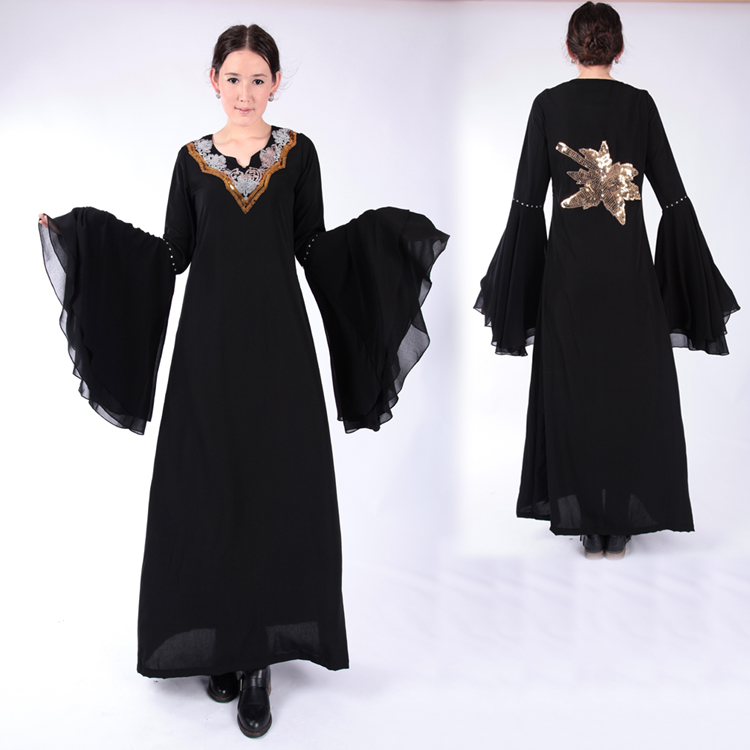







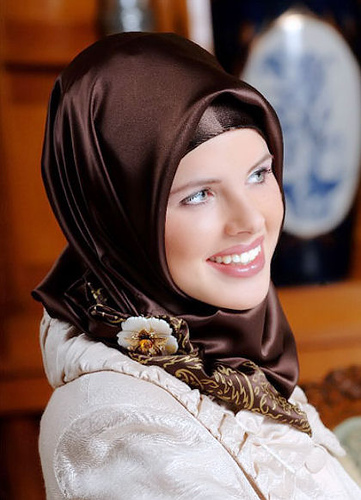


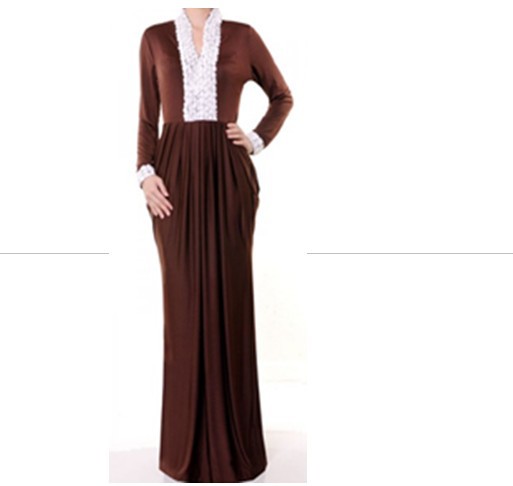

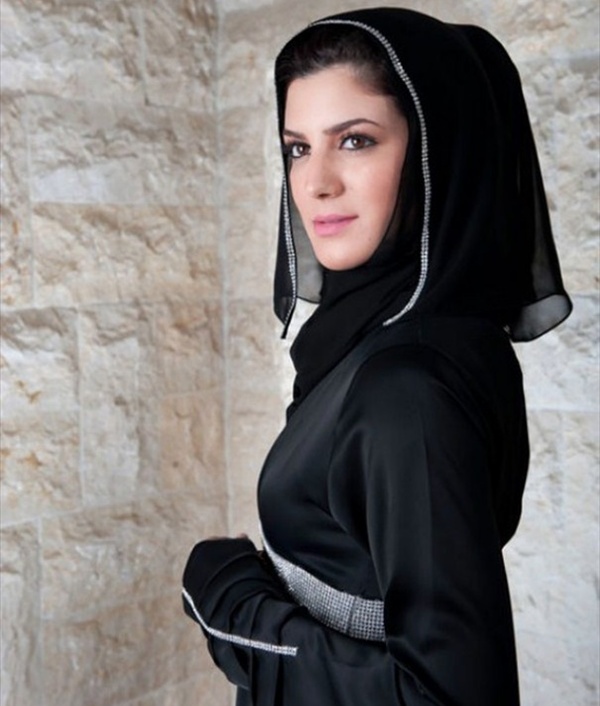

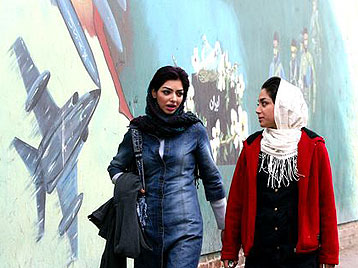


.jpg)



Islamic dress in Europe, notably the variety of headdresses worn by Muslim women, has become a prominent symbol of the presence of Islam in western Europe. In several countries the adherence to hijab (an Arabic noun meaning "to cover") has led to political controversies and proposals for a legal ban. The Netherlands government has decided to introduce a ban on face-covering clothing, popularly described as the "burqa ban", although it does not only apply to the Afghan-model burqa. Other countries, such as France are debating similar legislation, or have more limited prohibitions. Some of them apply only to face-covering clothing such as the burqa, chador, boushiya, or niqab; some apply to any clothing with an Islamic religious symbolism such as the khimar, a type of headscarf (some countries already have laws banning the wearing of masks in public, which can be applied to veils that conceal the face). The issue has different names in different countries, and "the veil" or "hijab" may be used as general terms for the debate, representing more than just the veil itself, or the concept of modesty embodied in hijab.
Although the Balkans and Eastern Europe have Indigenous Muslim populations, most Muslims in western Europe are members of immigrant communities. The issue of Islamic dress is linked with issues of immigration and the position of Islam in western society. European Commissioner Franco Frattini said in November 2006, that he did not favour a ban on the burqa.[10] This is apparently the first official statement on the issue of prohibition of Islamic dress from the European Commission, the executive of the European Union. The reasons given for prohibition vary. Legal bans on face-covering clothing are often justified on security grounds, as an anti-terrorism measure.[11][12]
Ayaan Hirsi Ali sees Islam as incompatible with Western values, at least in its present form. She advocates the values of 'Enlightenment liberalism', including secularism and equality of women. For her, the burqa or chador are both a symbol of religious obscurantism and the oppression of women. Western Enlightenment values, in her view, require prohibition, regardless of whether a woman has freely chosen Islamic dress. Islamic dress is also seen as a symbol of the existence of parallel societies, and the failure of integration: in 2006 British Prime Minister Tony Blair described it as a "mark of separation".[13] Visible symbols of a non-Christian culture conflict with the national identity in European states, which assumes a shared (non-religious) culture. Proposals for a ban may be linked to other related cultural prohibitions: the Dutch politician Geert Wilders proposed a ban on hijabs, in Islamic schools, in new mosques, and in non-western immigration.
In France and Turkey, the emphasis is on the secular nature of the state, and the symbolic nature of the Islamic dress, and bans apply at state institutions (courts, civil service) and in state-funded education. These bans also cover Islamic headscarves, which in some other countries are seen as less controversial, although law court staff in the Netherlands are also forbidden to wear Islamic headscarves on grounds of 'state neutrality'. An apparently less politicised argument is that in specific professions (teaching), a ban on "veils" (niqab) is justified, since face-to-face communication and eye contact is required. This argument has featured prominently in judgements in Britain and the Netherlands, after students or teachers were banned from wearing face-covering clothing. Public and political response to such prohibition proposals is complex, since by definition they mean that the government decides on individual clothing. Some non-Muslims, who would not be affected by a ban, see it as an issue of civil liberties, as a slippery slope leading to further restrictions on private life. A public opinion poll in London showed that 75 percent of Londoners support "the right of all persons to dress in accordance with their religious beliefs".[14] In another poll in the United Kingdom by Ipsos MORI, 61 percent agreed that "Muslim women are segregating themselves" by wearing a veil, yet 77 percent thought they should have the right to wear it.
Islamic Clothing For Women Abaya Designs 2014 Dress Collection Dubai Styles Fashion Pics Photos Images Wallpapers

Islamic Clothing For Women Abaya Designs 2014 Dress Collection Dubai Styles Fashion Pics Photos Images Wallpapers
Islamic Clothing For Women Abaya Designs 2014 Dress Collection Dubai Styles Fashion Pics Photos Images Wallpapers

Islamic Clothing For Women Abaya Designs 2014 Dress Collection Dubai Styles Fashion Pics Photos Images Wallpapers
Islamic Clothing For Women Abaya Designs 2014 Dress Collection Dubai Styles Fashion Pics Photos Images Wallpapers

Islamic Clothing For Women Abaya Designs 2014 Dress Collection Dubai Styles Fashion Pics Photos Images Wallpapers

Islamic Clothing For Women Abaya Designs 2014 Dress Collection Dubai Styles Fashion Pics Photos Images Wallpapers

Islamic Clothing For Women Abaya Designs 2014 Dress Collection Dubai Styles Fashion Pics Photos Images Wallpapers

Islamic Clothing For Women Abaya Designs 2014 Dress Collection Dubai Styles Fashion Pics Photos Images Wallpapers

Islamic Clothing For Women Abaya Designs 2014 Dress Collection Dubai Styles Fashion Pics Photos Images Wallpapers

Islamic Clothing For Women Abaya Designs 2014 Dress Collection Dubai Styles Fashion Pics Photos Images Wallpapers

Islamic Clothing For Women Abaya Designs 2014 Dress Collection Dubai Styles Fashion Pics Photos Images Wallpapers

Islamic Clothing For Women Abaya Designs 2014 Dress Collection Dubai Styles Fashion Pics Photos Images Wallpapers
Islamic Clothing For Women Abaya Designs 2014 Dress Collection Dubai Styles Fashion Pics Photos Images Wallpapers

Islamic Clothing For Women Abaya Designs 2014 Dress Collection Dubai Styles Fashion Pics Photos Images Wallpapers

Islamic Clothing For Women Abaya Designs 2014 Dress Collection Dubai Styles Fashion Pics Photos Images Wallpapers

Islamic Clothing For Women Abaya Designs 2014 Dress Collection Dubai Styles Fashion Pics Photos Images Wallpapers

Islamic Clothing For Women Abaya Designs 2014 Dress Collection Dubai Styles Fashion Pics Photos Images Wallpapers

Islamic Clothing For Women Abaya Designs 2014 Dress Collection Dubai Styles Fashion Pics Photos Images Wallpapers
.jpg)
Islamic Clothing For Women Abaya Designs 2014 Dress Collection Dubai Styles Fashion Pics Photos Images Wallpapers
Islamic Clothing For Women Abaya Designs 2014 Dress Collection Dubai Styles Fashion Pics Photos Images Wallpapers

Islamic Clothing For Women Abaya Designs 2014 Dress Collection Dubai Styles Fashion Pics Photos Images Wallpapers

No comments:
Post a Comment